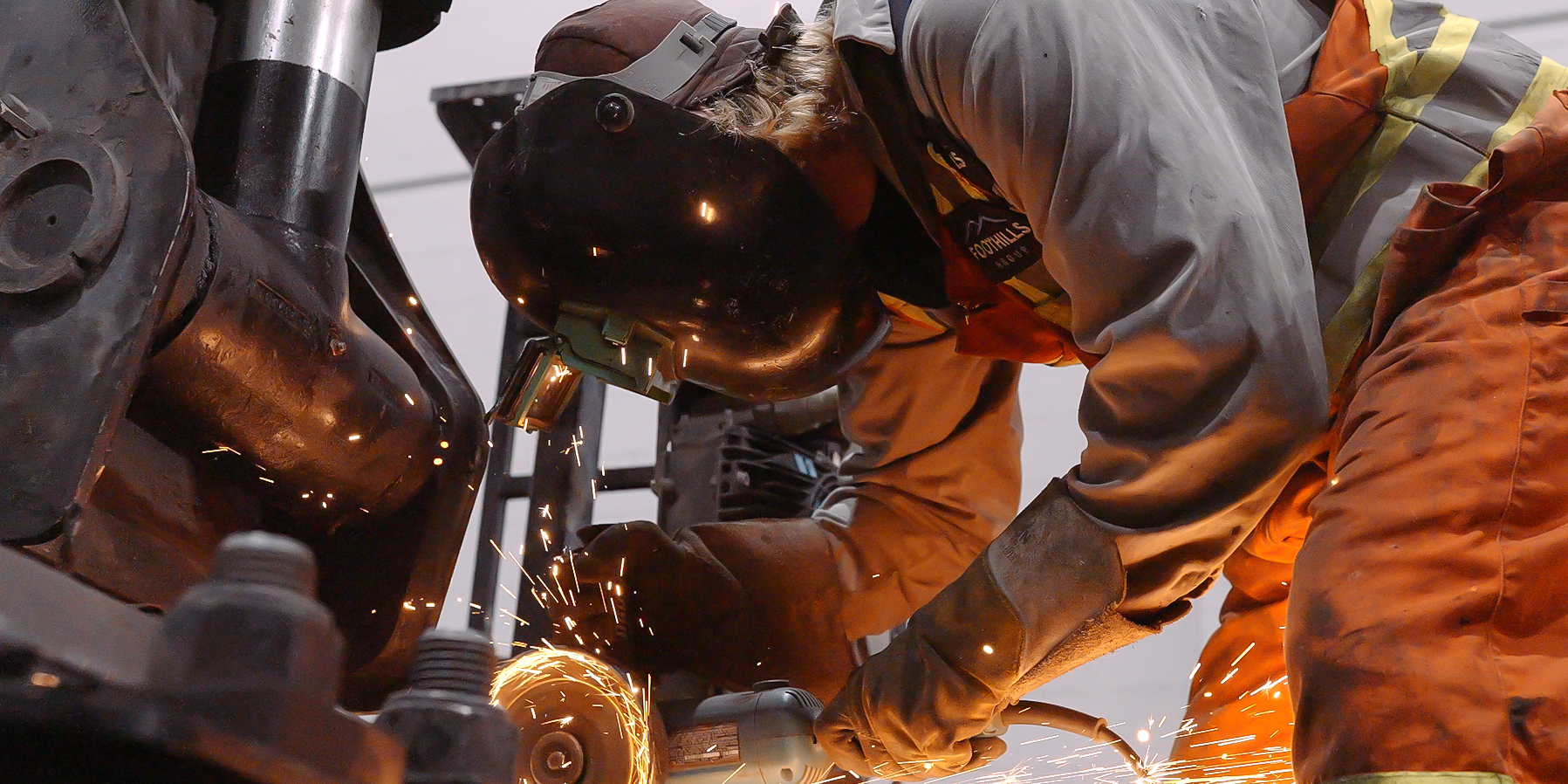
Just-in-Time Ordering vs. Bulk Buying: Find the Profit Sweet Spot in Heavy-Duty Parts
If you run a diesel, truck, trailer, fleet, or equipment shop, you already live the inventory tightrope: stock too little and a bay sits idle; stock too much and your cash collects dust on the shelf. The best operators don’t pick a side - they run a smart mix. Order the pricey, slow-moving items just in time, and bulk-stock the fast movers you burn through every week. This guide breaks down how to do exactly that - and how a purpose-built platform like ShopView helps you get there with less guesswork and more profit per bay.
The Real Cost: Too Much vs. Too Little
Let’s quantify the pain.
- Downtime is brutal. When a truck waits on a part, the fleet’s losing money - often hundreds per vehicle per day. Multiply that across bays and you’ve got serious revenue leakage.
- Overstocking bleeds quietly. Carrying inventory usually runs in the 20–30% per year range of the inventory’s value. That $100,000 of “just-in-case” parts can quietly burn ~$25,000 annually in storage, insurance, shrinkage, and obsolescence. And here’s a sobering heuristic: if a part hasn’t moved in 6 months, odds are low you’ll need it soon; past 12 months, usage probability plummets.
Bottom line: missing parts and excess parts both eat margin. The goal is “right part, right time” - not “all parts, all the time.”
Just-in-Time (JIT) Ordering: “Buy When the Job Demands It”
What it is: You purchase parts right before you’ll use them - especially for high-dollar, low-turn items (think ECMs, specialty transmissions, DPFs).
Why shops use it:
- Lower carrying costs & better cash flow. You stop paying to warehouse money. That freed-up cash funds bays, tools, techs, or marketing.
- Less waste & obsolescence. No shelf rot, fewer superseded part numbers gathering dust.
- Lean operations. JIT forces ordering to mirror real demand, exposing duplicate orders and ghost stock errors.
- Faster cash ROI. When you buy closer to the repair, you shorten the time between paying for a part and billing for the job.
Trade-offs to manage:
- Stockout risk. Miss a reorder window or get hit by a delivery delay, and a job stalls.
- Supplier dependence. JIT only works if vendors are reliable - weather, backorders, and supply hiccups can bite.
- More frequent orders. Smaller, more frequent POs can raise freight and admin time (unless you automate).
- Planning requirement. You need accurate scheduling and real-time inventory data. “Seat-of-the-pants JIT” is a guaranteed headache.
Best fits: High-value or bulky parts, items with volatile demand, or anything that clogs precious shelf space. If your supplier can deliver within 24 hours (or same-day locally), JIT becomes far less risky.
Bulk Buying & Stocking: “Buy Big Where It Moves”
What it is: Purchase larger quantities than immediate need - perfect for items you replace constantly: filters, fluids, belts, brake components, hoses, connectors, PM kit contents.
Why shops use it:
- Volume discounts & lower unit cost. Hit price breaks, consolidate freight, and protect your margins on high-use parts.
- Immediate availability. A truck rolls in, you grab parts - no parts runs, no delivery waits, faster cycle times.
- Fewer orders to manage. One bigger PO beats ten small ones.
- Buffer against disruptions. Your shelves absorb vendor hiccups, seasonal spikes, and price swings.
Trade-offs to manage:
- Tied-up cash & higher carrying costs. If usage lags, your discount gets eaten by overhead.
- Obsolescence risk. Equipment mix changes, parts get superseded, or perishables expire.
- Storage strain. Pallets of filters and drums of oil crowd the room and complicate counts.
- Payback timing. That 10% discount isn’t a win if it takes two years to turn the inventory.
Best fits: Bread-and-butter consumables with steady velocity, interchangeability across makes, and long shelf life. Avoid bulking specialized, perishable, or model-specific items.
How to Decide: A Practical Framework for Every Part
You don’t need a PhD in supply chain. Start with five questions per part (or category):
- Usage Frequency: Is it a fast mover (daily/weekly), moderate (monthly), or slow (quarterly+)?
- Fast movers: Bulk-stock with healthy par levels and reorder points.
-
- Slow movers: JIT or one-off order when a WO is confirmed.
- Slow movers: JIT or one-off order when a WO is confirmed.
- Part Cost & Value: Does stocking this tie up a lot of capital?
- High-dollar items: Default JIT - unless they’re mission-critical and long-lead.
- Low-cost items: Bulk if usage is steady; carrying cost is minimal compared to uptime.
- High-dollar items: Default JIT - unless they’re mission-critical and long-lead.
- Criticality & Downtime Impact: What happens if you don’t have it?
- Grounds a truck / compliance required: Keep at least one in safety stock.
-
- Cosmetic / non-critical: JIT is fine.
- Lead Time & Supplier Reliability: How fast and how consistently can you replenish?
- Short, reliable lead time: JIT works for more items.
-
- Long/erratic lead time: Stock more or hold a safety buffer.
- Size, Shelf Life & Obsolescence: Does it eat space or age out?
- Bulky/perishable/tech-volatile: Favor JIT or minimal on-hand.
Turn those answers into a simple A-B-C plan:
- A-items (stock deep): High use, critical, short lead - bulk buy, set strong reorder points.
- B-items (stock smart): Moderate use or moderate criticality - carry a few; trigger JIT when hitting min.
- C-items (JIT/one-off): Rare use or non-critical - don’t stock unless a job demands it.
Pro tip: Audit your parts room quarterly. Anything untouched for 12+ months is a candidate to liquidate, return, or write down. Free the cash and the shelf space.
Seasonality matters: Batteries jump in winter, cooling in summer, PM kits before peak season. Bulk up a month ahead; taper when the wave passes.
Freight thresholds without hoarding: Batch JIT orders to meet free-freight minimums - but don’t let “chasing a discount” turn into dead stock.
What “Balanced” Looks Like in the Real World
- Shop A (balanced): Trimmed 3-year-old dead stock, set reorder points for the top 20% of fast movers (which account for ~80% of usage), and shifted high-value items to JIT with one-deep safety stock for long-lead criticals. Result: more cash on hand, fewer parts emergencies, faster ticket turnaround.
- Shop B (unbalanced): Pallets of slow-moving specialty parts to hit “discounts,” while bays sit empty waiting on routine PM items. Result: cash trapped on shelves, missed billables, grumpy fleet customers.
Same market. Different outcomes. The difference is data, discipline, and process.
The Force Multiplier: Inventory Management with ShopView
You can run a balanced strategy on clipboards and whiteboards - but it’s rough. A heavy-duty-focused platform like ShopView makes it simple and repeatable:
- Live, trustable counts (no ghost stock). Every pick on a work order updates stock in real time across bins and locations. You stop re-ordering parts you already own - and stop promising parts that aren’t actually there.
- Smart min/max & automated reorders. Set par levels per SKU. When stock hits minimums, ShopView alerts you or auto-builds POs. Keep fast movers flowing in bulk and slow movers lean via JIT - without babysitting.
- One-click purchasing & supplier integrations. Build a WO, see what’s short, and order from connected suppliers right from the same screen. Batch smaller JIT orders to hit free-freight without overbuying.
- Usage analytics & seasonality reports. Spot your true top movers, aging SKUs, and monthly velocity. Turn hunches into policy: raise reorder points where you consistently stock out; liquidate or JIT the 12-month shelf-sitters.
- Telematics & DVIR-driven JIT. Connect fault codes, odometers, and DVIRs from fleets so you can pre-stage parts “just in time before failure.” That’s predictive JIT - zero drama, faster turns.
- Multi-location visibility. See stock at every branch or service truck, transfer between locations, and bulk buy centrally to capture discounts - without duplicating slow movers everywhere.
- Fewer admin leaks. Digital POs, receiving, returns, and accounting sync remove paperwork errors and missed part billings. It’s not glamorous, but it’s where profit hides.
- Built for heavy-duty reality. VIN decoders for HD, trailer/equipment tracking, PM schedule management, DVIR workflows, cores and lot tracking - the features you actually need, without “auto-only” workarounds.
Implementation Playbook (Start This Week)
- Export usage for the last 12 months. Sort by quantity used and revenue impact. Tag A/B/C as above.
- Set min/max for A-items. Stock deeper. Aim to cover realistic lead time + safety buffer.
- Flip C-items to JIT. Keep one-deep only if critical with long lead times.
- Clean house. Identify anything >12 months old - return, liquidate, or bundle into promos.
- Align with suppliers. Confirm lead times, delivery cutoffs, free-freight thresholds, and emergency options. Add a secondary source for critical SKUs.
- Digitize & automate. Move picks, counts, min/max, and POs into ShopView. Turn on low-stock alerts.
- Leverage telematics/DVIR. Pre-order parts against scheduled work from fault codes and inspections.
- Review monthly, seasonally adjust quarterly. Raise/lower par levels based on real velocity and upcoming peaks.
Do that, and you’ll see fewer idle bays, fewer “parts runs,” more completed WOs per tech, and noticeably better cash flow.
FAQs We Hear from Independent & Mid-Sized Shops
How do I know if a bulk discount is worth it?
Estimate carrying cost (use 25% of inventory value annually as a rule of thumb) and expected turn time. If the discount doesn’t beat the carrying + obsolescence risk, pass - or buy a smaller multiple.
What about freight killing JIT?
Batch JIT orders across jobs to hit supplier freight minimums. With ShopView, you can consolidate backorders and planned WOs into a single PO without overbuying.
We’re tight on space - what now?
Push bulky/slow items to JIT, stock fast-moving smalls deeper with bin discipline, and use multi-location transfers so you don’t duplicate inventory in every branch.
When should I keep a spare of an expensive part?
If a single stockout would stall critical customers, lead time is long, and usage is predictable, keep one-deep. Otherwise, JIT.
The Payoff: More Wrench Time, Less Waste
Balanced inventory turns into throughput and cash:
- Faster turnarounds because you never run short on the common stuff.
- Higher profit per bay because capital isn’t trapped in museum-grade parts.
- Happier fleets because downtime drops - and trust rises.
- Lower stress because ordering becomes proactive, not panicked.
Parts aren’t like wine - they don’t get better with age. Trim the fat, stock what moves, and let software handle the rest.
Ready to Stop Losing Money on Parts?
See how ShopView keeps your shelves lean and your bays busy. Start Free Trial or Book a 15-Minute Demo.
Most shops see measurable gains within 90 days - fewer stockouts, cleaner billing, and faster WOs - powered by inventory that finally works for you, not against you.
.png?width=1500&height=1500&name=11%20(1).png)








.png?width=1500&height=1500&name=1%20(1).png)

%20-%20Copy.png?width=1500&height=1500&name=2%20(1)%20-%20Copy.png)



-1.jpg)